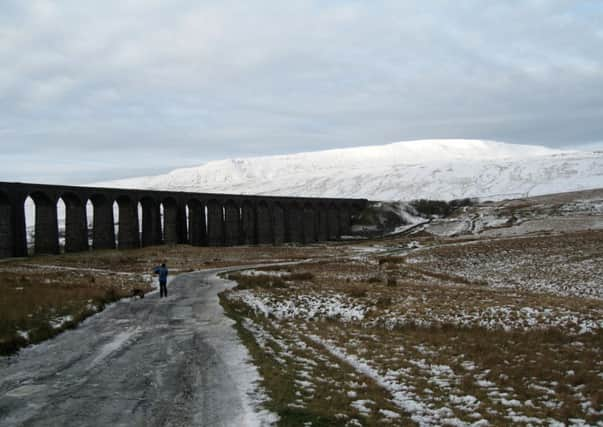Country & Coast: Yorkshire’s highest mountain


And so whale-like Whernside, at 2,415 feet, has a simple numeric and symbolic advantage over the other Three Peaks summits of Ingleborough (2,372ft) and Penyghent (2,277ft), which nevertheless are far more compelling to climb for walkers and have rightly become perennials of the Yorkshire calendar trade.
Only 50,000 people are said to climb Whernside in the Yorkshire Dales each year compared to a figure of 120,000 for Ingleborough and 80,000 for Penyghent. Even being the birthright of every Tyke to stand at the top of their county doesn’t seem to make a significant difference.
Advertisement
Hide AdAdvertisement
Hide AdBut perhaps the appeal has been diluted by the fact that Whernside has enjoyed its eminence over Yorkshire summits only since 1974, when county boundaries were redrawn and the previous holder of the “highest” accolade, Mickle Fell in Upper Teesdale, was handed over to County Durham.
The change came into effect on April Fool’s Day, and I have always suspected it was a joke by some Lancastrian bureaucrat in Whitehall to confer the title of “Yorkshire’s Everest” on one of the least mountain-like mountains in England.
When seen at close quarters there are no magnificent thrusts of vertigo-inducing rock face to gape at, and barely a sharp angle is to be found anywhere on its massive bulk.
And if Whernside does happen to appear on a calendar it is always as a backdrop to the dramatic railway viaduct at Ribblehead.
Advertisement
Hide AdAdvertisement
Hide AdUpstaged by something that appears to be part of a child’s train set when seen from the mountain, Whernside is also largely unloved by those who make the climb.
For the thousands who take up the 24-mile challenge of the Yorkshire Three Peaks it is just a dull slog in the middle, an anti-climax following the thrilling ascent of Penyghent and an energy-sapper before the triumphant conquering of Ingleborough.
Still, for three decades it has been an annual tradition for me to make a winter ascent of Whernside, because it is in snow that the mountain takes on a different character, sometimes providing a real mountaineering experience.
Five years ago, after one of the heaviest snowfalls I can remember, I set off from Ingleton to traverse Whernside’s long southern ridge, but so deep were the drifts up there it became obvious I could not reach the summit in daylight and would have to abort the climb.
Advertisement
Hide AdAdvertisement
Hide AdHowever, it was also too late to safely retrace my steps, and so the only option open to me was a hairy drop over the steep flank of West Fell.
It was a slow and very careful descent, with darkness falling fast, but I eventually made it to the warmth of the Old Hill Inn at Chapel-le-Dale.
Ever since I have treated Whernside with the respect it deserves.